Although it first flew over 60 years ago, the North American X-15 remains the fastest manned aircraft in the world with its unique designs and unconventional takeoff and landing methods.
The X-15 resembles a bullet more than a conventional aircraft and achieves its speed as it is essentially a rocket. The X-15 completed 199 test flights over a span of 9 years, beginning in 1959.
The X-15 could fly to the edge of space and glide back to Earth, collecting data that informed the design and engineering of later American spacecraft, including the Space Shuttles of NASA.
The X-15 was piloted by a select team of 12 pilots, including Neil Armstrong, who led the lunar landing in 1969.
“One of the X-15 pilots, Bill Dana, once told me that it gives you the greatest speed, the greatest thrill, the greatest terror. We haven’t built anything like the X-15 since it flew in the atmosphere,” said Christian Gelzer, a senior historian at NASA’s Armstrong Flight Research Center, in an interview with CNN.
The X series includes over 60 experimental aircraft produced by U.S. government agencies, including the Air Force and NASA, since the end of World War II in 1945.
In 1952, when the development of the X-15 began, the officially recorded speed record for aircraft was under 700 miles per hour (1,126 km/h). The mission of the X-15 was to achieve speeds of Mach 5 (five times the speed of sound, nearly 4,000 miles per hour or 6,437 km/h).
Mr. Gelzer noted: “An aircraft like this would have to fly at an altitude of 250,000 feet (76.2 km), higher than any altitude achieved by aircraft at that time. That was a very demanding requirement.”
The X-15 project was led by the U.S. Air Force and the National Advisory Committee for Aeronautics (NACA, which became NASA in 1958).
“They operated based on scientific data, flight dynamics data. But in the context of the Cold War, the research was accelerated,” Mr. Gelzer said.
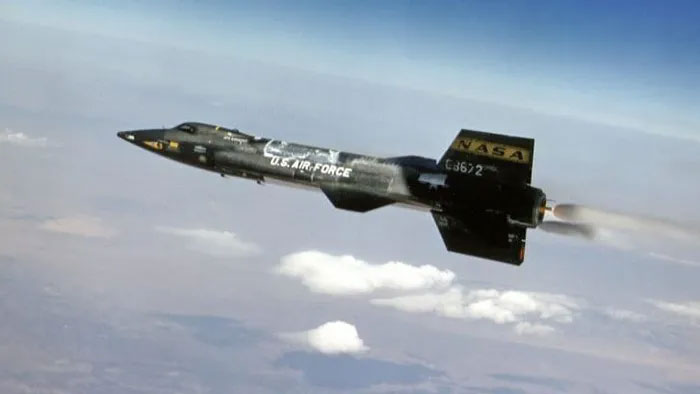
X-15 flying over California. (Photo: NASA).
Rocket
Essentially, the X-15 is a rocket with a cockpit. Unlike other aircraft, it was not designed to take off from a runway. Instead, it was carried aloft and released from a mothership, in this case, a specially modified B-52 bomber.
With the 50-foot (over 15m) X-15 beneath its wing, the B-52 took off from Edwards Air Force Base in California and flew toward Nevada or Utah, turning back and releasing the aircraft at an altitude of 45,000 feet (13.7 km) and a speed of over 600 miles per hour (over 965.6 km/h). Only at that moment did the X-15 pilot activate the rocket engine to propel the X-15 beyond the Earth’s atmosphere and into space.
The fuel (a combination of ammonia and liquid oxygen) burned in less than two minutes and it was not a smooth flight. Mr. Gelzer stated: “It flew aerodynamically like a regular airplane, but as it climbed higher, it flew like a wild horse. Milt Thompson, one of the X-15 pilots, said it was the only aircraft he ever flew that he was glad when the engine stopped.”
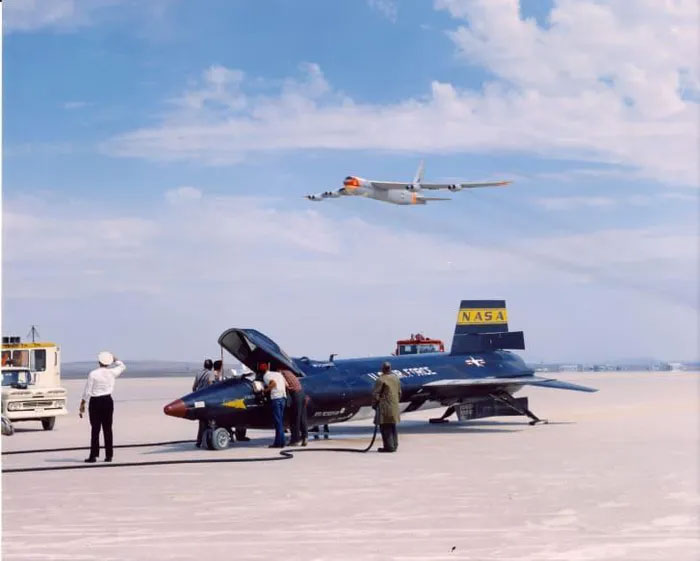
X-15 resting at Rogers Dry Lake in California in September 1961 after a mission. (Photo: NASA).
Gliding
After the X-15 reached its target altitude (354,200 feet, equivalent to 108 km – ten times the cruising altitude of a commercial aircraft), the pilot conducted experiments in an environment that was previously unknown, helping experts gather data on supersonic flight.
Much of the X-15’s design focused on its ability to fly at high altitudes, where the air is so thin that conventional aerodynamic surfaces no longer function effectively. Therefore, the X-15 was equipped with a reaction control system, similar to the reaction control systems later used by the Space Shuttles and the International Space Station.
It expelled streams of hydrogen peroxide (essentially water oxidized to a very high concentration), creating enough thrust to maneuver the aircraft in the thin air of the upper atmosphere.
Flying at thousands of miles per hour, the outer skin of the X-15 became very hot due to aerodynamic friction and was therefore made of a special nickel-chromium alloy called Inconel X.
“The aircraft heated up to 1,200 degrees F (649 degrees C). And the pilot could hear the expansion sounds behind them,” Mr. Gelzer said.
Landing the X-15 was not easy. “From the moment the aircraft ran out of fuel, or the pilot shut down the engine, it became a glider. A very heavy, very fast glider with very small wings. So, it was not a good glider. At that point, the pilot had to rely on speed and altitude to reach the target,” he explained.
Worse still, the nose gear lacked steering and the main landing gear only had skids (two retractable steel beams that could slide on the landing surface), making it impossible to land on a runway. Instead, the aircraft had to land on a dry lake bed.
“By the time it returned to the ground, the aircraft looked nothing like it did when it left the base. The fuselage showed holes from the heat burn,” Mr. Gelzer remarked.
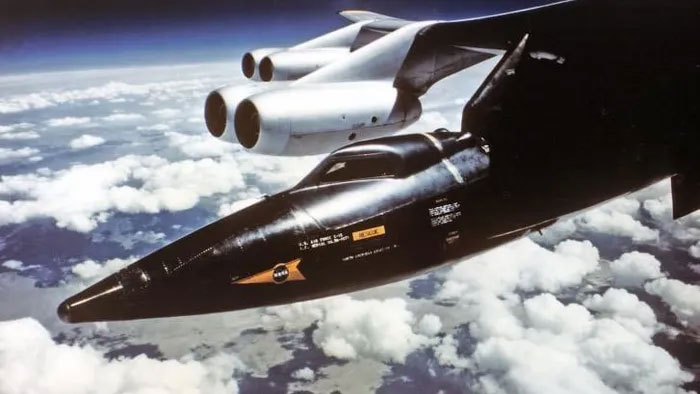
X-15 flying to the edge of space and then gliding back to Earth. (Photo: NASA).
Records
Most aircraft land ultimately at speeds below 200 miles per hour (354 km/h). However, the X-15 could begin its landing process at an altitude of 20,000 feet (6.1 km) and at a supersonic speed of over 1,500 miles per hour (2,414 km/h) – a completely different condition compared to what most pilots experienced. Things did not always end well.
Mr. Gelzer stated: “This is the type of experimental aircraft and everything went wrong at most landing attempts. Notably, the pilots tried to bring the aircraft back down in a stable manner, despite the issues they faced.”
Out of nearly 200 flights, only two flights encountered accidents during landing, including one fatal incident. On November 15, 1967, pilot Michael Adams entered a spin while re-entering the atmosphere and was unable to keep the aircraft straight. Ultimately, the aircraft broke up in mid-air, resulting in the pilot’s death.
The inherent risks of flying the X-15, half aircraft and half spacecraft, are one of the reasons why this aircraft’s records have never been surpassed with modern technology. It also served as a stepping stone for space programs, which had greater ambitions than mere speed.
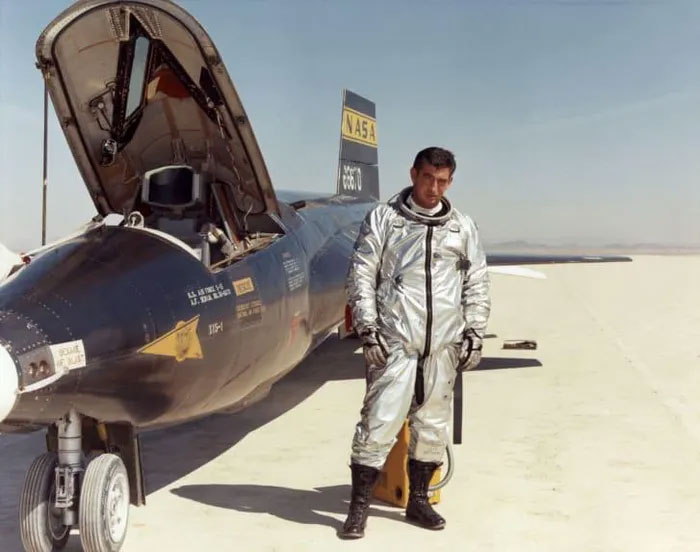
The X-15 is regarded as one of the most successful flight research programs ever conducted, and over nine years of operation, it collected invaluable data on high-speed flight, returning from space.
In 1967, pilot Pete Knight achieved a record speed of 4,520 miles per hour (over 7,274 km/h), or Mach 6.7 (6.7 times the speed of sound).
The X-15 also produced a generation of astronauts, including one of the greatest: Neil Armstrong. In one of his seven X-15 flights, Armstrong demonstrated the legendary problem-solving skills that ultimately made him the commander of Apollo 11.
Mr. Gelzer noted: “In 1962, Armstrong made a flight that took him to an altitude of 205,000 feet (62.5 km) and at a speed of Mach 3.8 (over 4,692 km/h). On the way back, he fell from the top of the atmosphere at around 90,000 feet (27.4 km) and glided like a rock. By the time the aircraft turned around, he was over the outskirts of Los Angeles without power. He still managed to bring the aircraft back and land it at Rogers Dry Lake. That was the longest X-15 flight ever.”
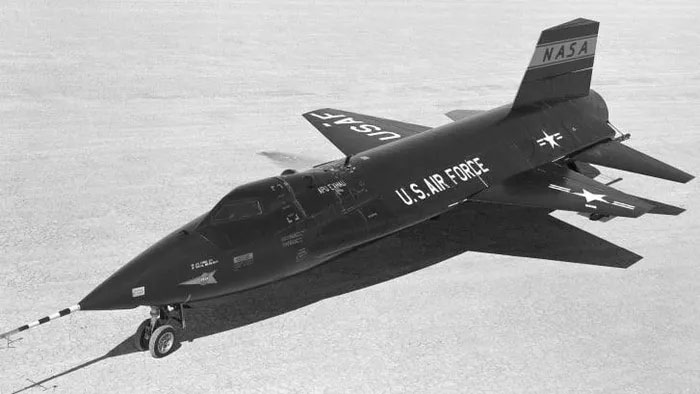
The X-15 still holds the record for the fastest manned aircraft. (Photo: NASA).
|
North American X-15 set speed and altitude records in the 1960s, reaching the edge of outer space and returning with valuable data used in the design of aircraft and spacecraft. The highest speed of the X-15 was 7,274 km/h (2,021 m/s), achieved on October 3, 1967, when William Knight flew at Mach 6.7 at an altitude of 31,120 m. In the X-15 program, 12 pilots conducted a total of 199 flights. Among these, 8 pilots completed a total of 13 flights that met the U.S. Air Force’s criteria for spaceflight by exceeding an altitude of 80 km, thus qualifying them to become astronauts. U.S. Air Force pilots were immediately qualified to become military astronauts, while civilian pilots were recognized as NASA astronauts in 2005, 35 years after the last X-15 flight. |


















































